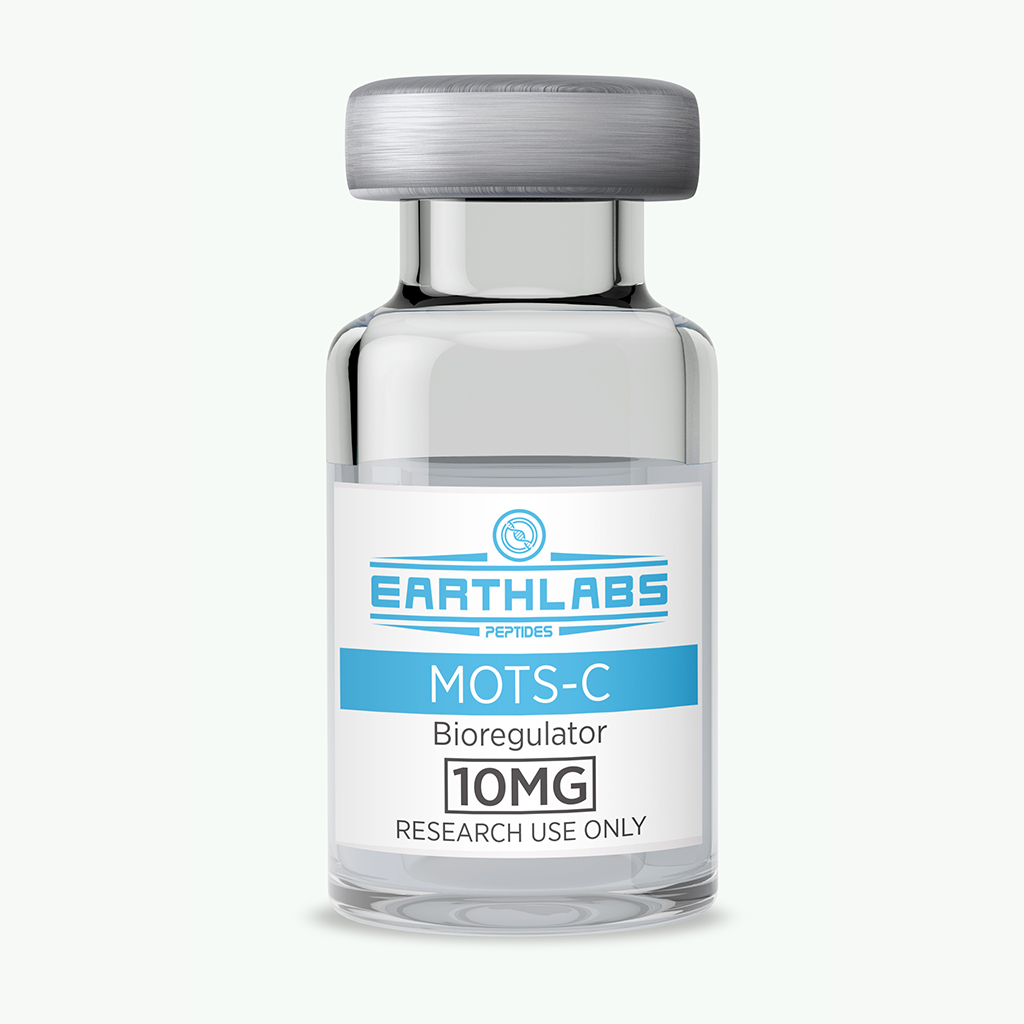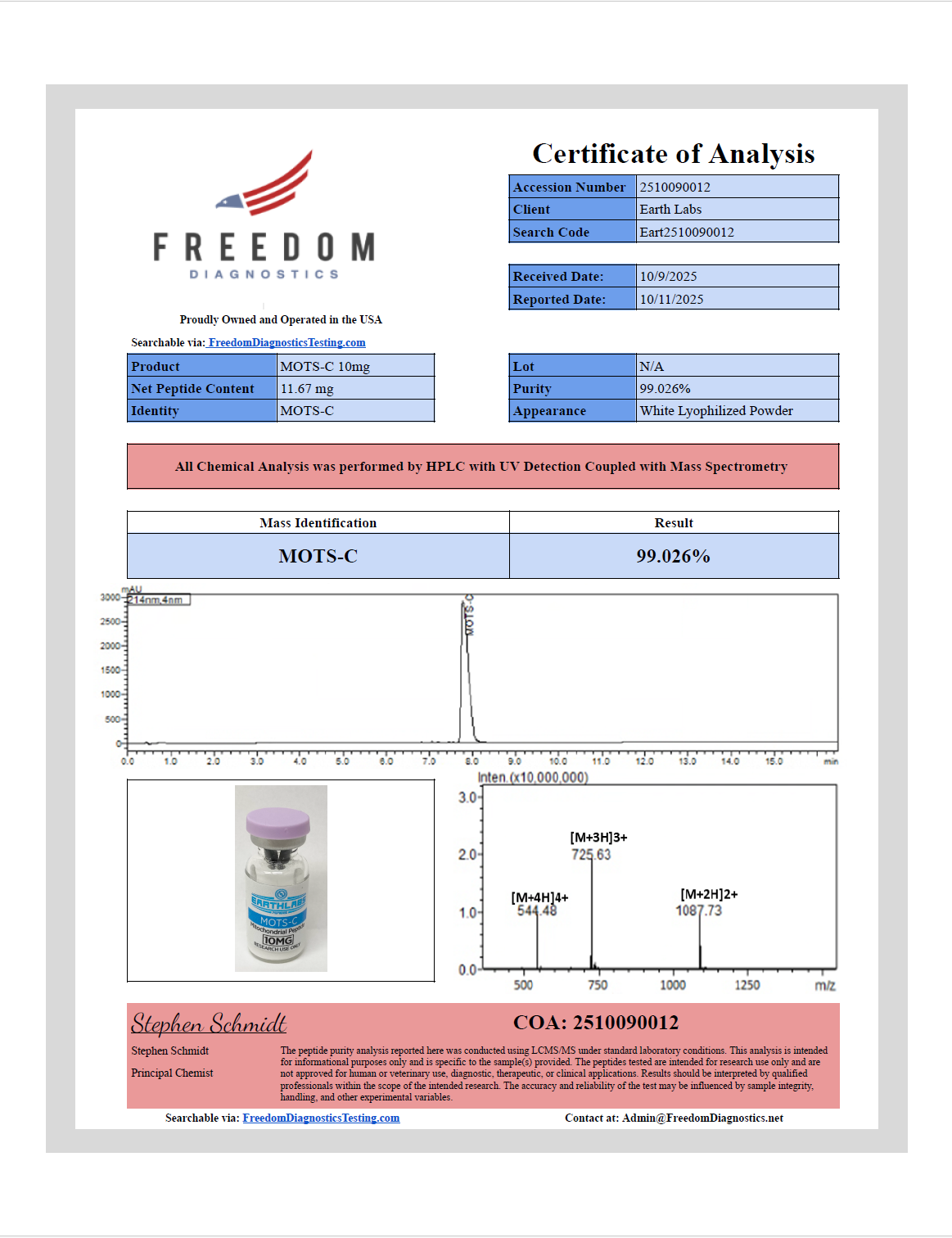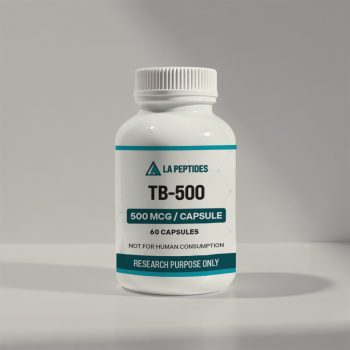Description
Product Overview:
Product Name: MOTS-c
Quantity: 10mg
Molecular Formula: C48H73NO13S
Molecular Weight: 1042.18 g/mol
Research Use Only. Not for Human Consumption.
Research Applications:
Mitochondrial Gene Expression and Peptide Biology
MOTS-c (Mitochondrial Open-Reading-Frame of the 12S rRNA Type-c) is a mitochondrial-encoded peptide discovered to play a role in regulating cellular metabolism. Unlike nuclear-encoded peptides, MOTS-c is translated from mitochondrial DNA, offering a unique model for investigating mitochondrial-nuclear communication and peptide signaling pathways in cellular biology [1].
Its discovery has provided insights into a new class of mitochondrial-derived peptides (MDPs) and opened up avenues for research into non-nuclear control mechanisms of cellular energy balance.
Metabolic Regulation and Insulin Signaling
In vitro and rodent models have shown that MOTS-c modulates insulin sensitivity and glucose metabolism. It activates AMPK (AMP-activated protein kinase), a master regulator of energy homeostasis, and enhances glucose uptake in skeletal muscle cells independent of insulin signaling [2]. This makes it a critical compound in metabolic research, particularly studies focused on insulin resistance and energy expenditure.
MOTS-c also alters the expression of genes related to metabolism under stress conditions, such as nutrient scarcity or oxidative damage.
Exercise Physiology and Muscle Studies
MOTS-c levels are elevated in response to exercise, and research indicates its involvement in skeletal muscle adaptation. In animal models, MOTS-c improves exercise capacity, enhances mitochondrial biogenesis, and reduces markers of muscle fatigue, making it a subject of growing interest in exercise physiology and aging studies [3].
Research into MOTS-c is often conducted in conjunction with markers like PGC-1α, SIRT1, and NRF1 to assess mitochondrial adaptation and endurance pathways.
Cellular Stress and Longevity Models
Preclinical studies show MOTS-c plays a role in stress resistance by modulating the integrated stress response (ISR) and supporting cellular viability under oxidative conditions. It has been observed to translocate to the nucleus and regulate the transcription of stress-response genes, furthering its role in adaptive cellular mechanisms [4].
Because of this activity, MOTS-c is under investigation in models of aging, DNA damage response, and redox balance.












There are no reviews yet.